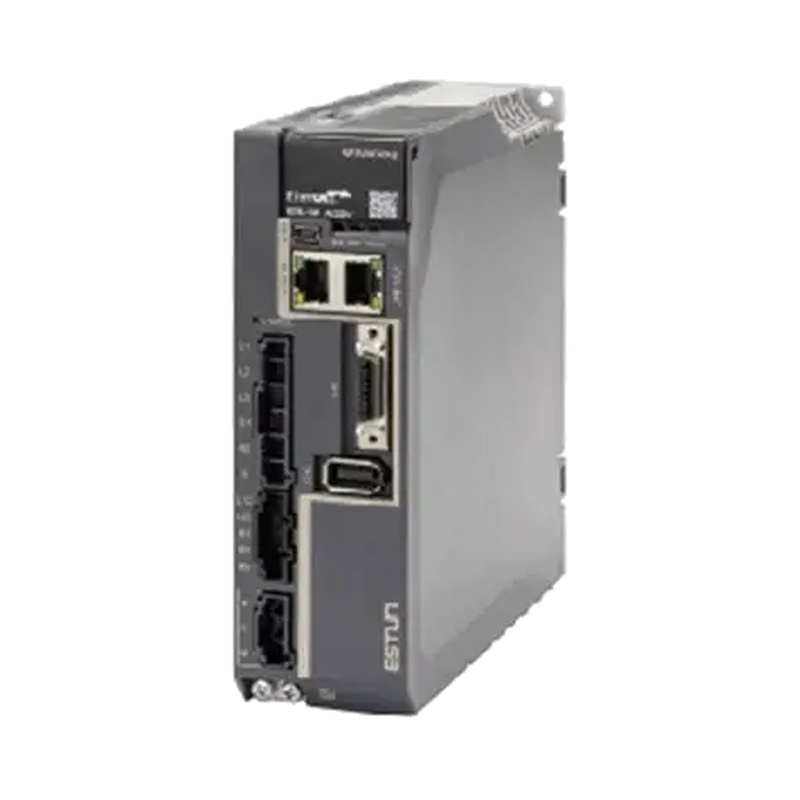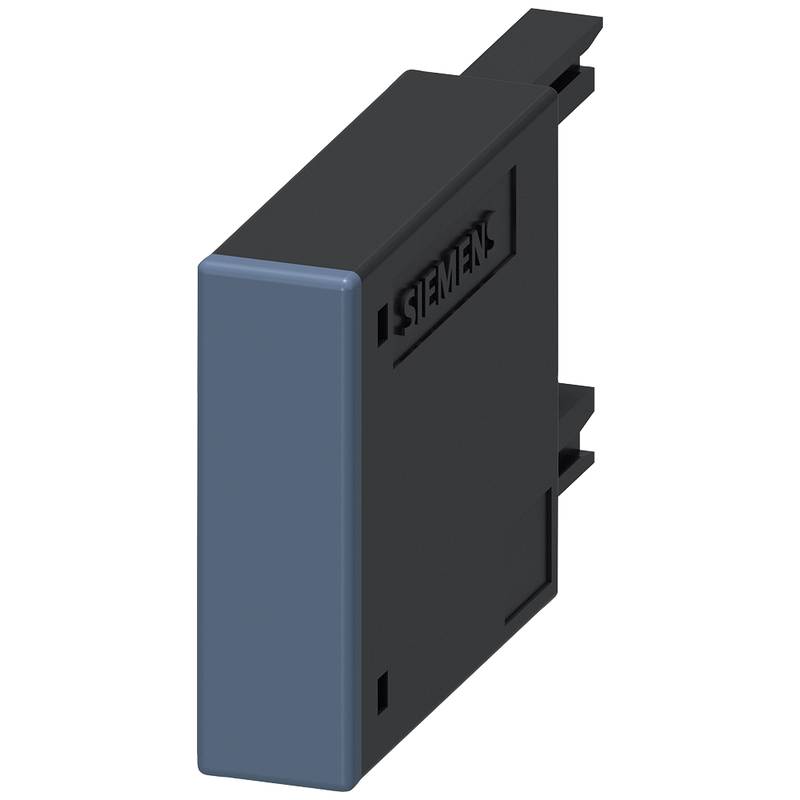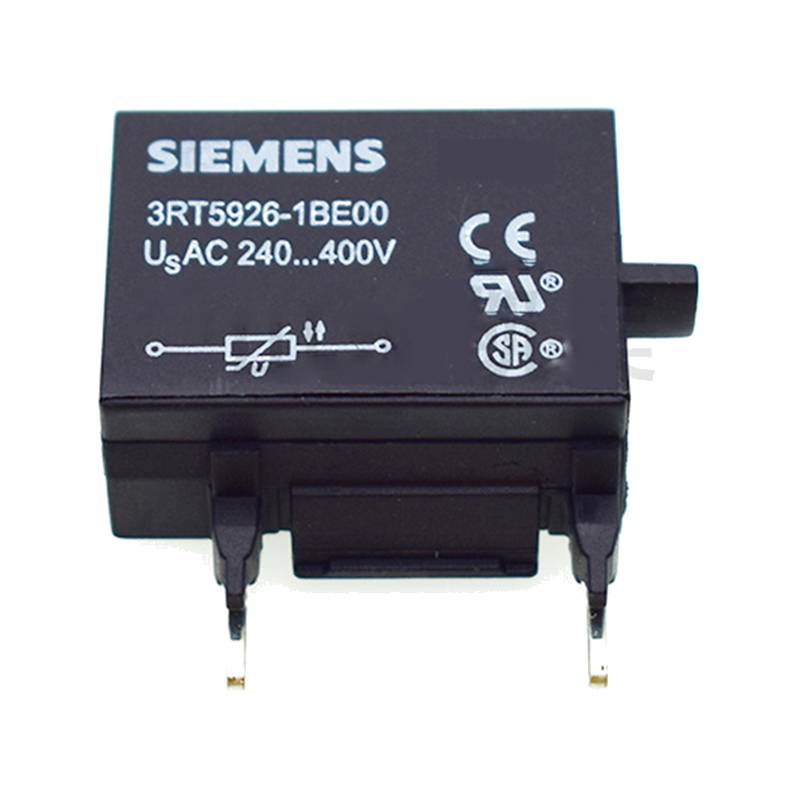
Siemens 5SY6320-8CC: Precision Power Protection for Demanding Industrial Environments
The Siemens 5SY6320-8CC is a robust 3-pole, 20A miniature circuit breaker (MCB) engineered for reliable power protection in a wide array of industrial and commercial applications. Featuring a D-curve tripping characteristic, this device is specifically designed to handle high inrush currents associated with inductive loads, such as motors, transformers, and welding equipment, without nuisance tripping. Its compact design, coupled with Siemens' renowned quality and durability, makes the 5SY6320-8CC an indispensable component for safeguarding electrical circuits against overloads and short circuits. With a rated voltage of 400V and a breaking capacity of 6kA, it offers a strong defense against electrical faults, ensuring operational continuity and personnel safety.
Product Specifications
| Specification | Value |
| :------------------------ | :---------------------- |
| Manufacturer | Siemens |
| Product Series | SENTRON 5SY |
| Model Number | 5SY6320-8CC |
| Poles | 3 |
| Rated Current | 20A |
| Rated Voltage | 400V AC |
| Tripping Curve | D |
| Breaking Capacity (Icn) | 6kA |
| Mounting Type | DIN Rail |
| Dimensions (H x W x D) | 89.8 x 52.8 x 76 mm |
| Protection Class | IP20 |
| Arc Extinguishing Method | Not specified (typical for MCBs) |
| Country of Origin | Germany (typically) |
| RoHS Compliant | Yes |
Core Features & Market Positioning
The Siemens 5SY6320-8CC stands out in the industrial circuit breaker market due to its specialized D-curve characteristic, a critical differentiator for applications involving significant inductive loads. This design mitigates false trips often experienced with standard B or C curve breakers when machinery starts up. Siemens' SENTRON line is synonymous with high reliability and longevity, positioning the 5SY6320-8CC as a premium solution for environments where operational uptime and equipment protection are paramount. Its robust construction ensures consistent performance even under harsh industrial conditions, providing a significant competitive advantage over less resilient alternatives. The product benefits from Siemens' extensive research and development, offering advanced protection in a compact form factor.
Key Application Scenarios
The Siemens 5SY6320-8CC is ideally suited for protecting circuits in various industrial settings. Its D-curve is particularly advantageous for motor control circuits, pump systems, and HVAC units where large starting currents are common. It is also a prime choice for protecting transformers, providing stable operation without premature tripping. In manufacturing plants, it secures power to heavy machinery and production lines. For commercial buildings, it can be used in distribution panels feeding equipment with high power demands. Its suitability extends to areas with welding equipment or other high-surge current devices, ensuring reliable circuit protection across a broad spectrum of demanding applications.
Practical System Integration Guidance
Integrating the Siemens 5SY6320-8CC into existing electrical systems is straightforward, leveraging standard DIN rail mounting for quick and secure installation. The device features clearly marked terminals for easy wiring of all three poles, accommodating appropriate conductor sizes for a 20A rating. For optimal performance and safety, ensure all connections are tightened to the manufacturer's specified torque. The 5SY6320-8CC can be easily combined with a wide range of supplementary components, such as auxiliary switches for remote signaling or shunt releases for remote tripping, enhancing system control and safety. Its compatibility with standard busbar systems, like Siemens' own 5ST series, facilitates efficient panel assembly and expansion.
Operation and Risk Mitigation
Operating the Siemens 5SY6320-8CC involves understanding its D-curve behavior. While it tolerates higher inrush currents, it will trip reliably for significant overloads or short circuits, protecting downstream equipment and preventing electrical fires. The clear ON/OFF indicator on the breaker provides immediate visual feedback on its status. Risk mitigation is inherent in its design: it actively prevents damage from fault conditions. In the event of a trip, identifying the cause (e.g., overload, short circuit, or equipment malfunction) is crucial before resetting. Always ensure the circuit is de-energized and the fault is cleared before re-engaging the breaker to prevent further damage or personal injury.
Scalability & Long-Term Value
The Siemens 5SY6320-8CC offers excellent long-term value through its compatibility with the broader Siemens SENTRON product ecosystem. This ensures seamless integration with other Siemens protection and control devices, facilitating system upgrades and expansions. Its robust design guarantees a long operational lifespan, minimizing the need for premature replacements. For facilities looking to embrace Industry 4.0 and IIoT, the 5SY6320-8CC can be integrated with smart monitoring devices and systems, providing valuable data on circuit status and power consumption for predictive maintenance and energy management strategies. This forward-looking compatibility ensures the breaker remains a relevant and valuable asset in evolving industrial automation landscapes.
Frequently Asked Questions (FAQs)
Q1: What is the primary advantage of the Siemens 5SY6320-8CC's D-curve tripping characteristic?
The D-curve is designed for high inrush currents common in inductive loads. This prevents nuisance tripping when equipment like motors or transformers start up. It provides reliable protection against overloads and short circuits without unnecessary interruptions.
This characteristic is essential for machinery that draws significantly more current during its initial power-on phase. The 5SY6320-8CC offers enhanced stability for such applications. It ensures operational continuity by differentiating normal startup surges from actual fault conditions.
The D-curve is a critical feature for industrial environments dealing with heavy machinery, welders, and power supplies. It optimizes performance by allowing necessary startup surges while still protecting the circuit effectively.
Q2: What types of industrial applications are best suited for the 5SY6320-8CC?
This circuit breaker excels in applications with high starting currents. This includes motor control, pumps, compressors, and HVAC systems. Its D-curve is ideal for protecting transformers and inductive loads.
It is also suitable for welding equipment and other devices that generate significant transient current demands. This makes it a versatile protective device for diverse industrial machinery.
In manufacturing and processing plants, the 5SY6320-8CC ensures the reliable operation of heavy-duty equipment and production lines. Its robust design supports demanding continuous operations.
Q3: Can the Siemens 5SY6320-8CC be easily integrated into existing electrical panels?
Yes, the 5SY6320-8CC is designed for standard DIN rail mounting. This simplifies installation and ensures a secure fit in most industrial electrical enclosures. Its compact 3-pole design also conserves space.
Wiring connections are straightforward, with clearly labeled terminals for each pole. This allows for quick and accurate connection of conductors, facilitating efficient panel assembly.
The breaker is compatible with common busbar systems, further streamlining integration. This allows it to be easily combined with other modular devices for a complete protection solution.
Q4: What is the breaking capacity of the Siemens 5SY6320-8CC?
The Siemens 5SY6320-8CC has a short-circuit breaking capacity of 6kA. This rating indicates the maximum fault current it can safely interrupt without sustaining damage. It is suitable for many standard industrial and commercial power distribution systems.
A 6kA breaking capacity is sufficient for many applications where the prospective fault current is within this limit. It ensures that the circuit breaker can effectively disconnect the circuit during a severe short circuit.
For applications with higher fault current levels, higher breaking capacity MCBs (e.g., 10kA or more) would be necessary. Always consult system fault current calculations to ensure the selected breaker meets the required protection level.
Q5: How does the D-curve tripping characteristic differ from B or C curves?
B-curve breakers trip between 3-5 times their rated current and are typically used for lighting and general-purpose circuits. C-curve breakers trip between 5-10 times their rated current, suitable for general industrial and commercial applications with moderate inductive loads.
The D-curve, as used in the 5SY6320-8CC, trips between 10-14 times its rated current. This higher threshold is specifically designed to accommodate the large inrush currents from high-inductive loads like motors, transformers, and welding equipment.
Choosing the correct tripping curve is vital to prevent nuisance tripping while ensuring adequate protection. The D-curve offers enhanced reliability for heavy-duty, high-surge current applications where B or C curves would prematurely trip.
Q6: What safety features does the Siemens 5SY6320-8CC incorporate?
The primary safety feature is its ability to automatically interrupt the circuit during overloads or short circuits, preventing electrical fires and equipment damage. It provides a critical layer of protection for personnel and property.
The device includes a clear ON/OFF status indicator, allowing for quick visual confirmation of the circuit's state. This aids in safe operation and troubleshooting procedures.
Its robust construction and adherence to international standards (like IEC) ensure reliable performance and safety when installed and operated correctly. Proper installation and maintenance are key to maximizing its safety benefits.
Q7: Can auxiliary switches or fault signal contacts be added to the 5SY6320-8CC?
Yes, the Siemens 5SY6320-8CC is designed to be compatible with supplementary components. These can include auxiliary switches for remote indication of the breaker's status (ON/OFF) or fault signal contacts.
These add-on modules enhance the breaker's functionality within a larger control or monitoring system. They allow for remote operation and integration into SCADA or building management systems.
Adding these components allows for greater flexibility in system design, enabling advanced automation and diagnostic capabilities. Refer to Siemens' documentation for specific compatibility and installation instructions.
Q8: What is the typical lifespan of a Siemens 5SY6320-8CC circuit breaker?
Siemens circuit breakers, including the 5SY6320-8CC, are manufactured to high-quality standards, offering excellent durability and a long operational lifespan. The exact lifespan can vary based on the severity of operating conditions, frequency of tripping, and environmental factors.
With proper installation, normal operation, and minimal tripping events, these devices can last for many years, often exceeding 10-15 years. They are designed for consistent performance throughout their service life.
Regular inspection and maintenance, as per manufacturer recommendations, can help ensure continued reliability and extend the breaker's effective service life. It is also crucial to ensure the breaker is correctly sized for the application.
Q9: Is the 5SY6320-8CC suitable for residential use?
While the 5SY6320-8CC is a high-quality industrial-grade breaker, its D-curve characteristic is typically overkill for standard residential circuits. Residential applications usually employ B or C curve MCBs, which are better suited for common household loads and sensitive electronics.
The D-curve is optimized for the high inrush currents of industrial machinery. Using it in a residential setting might lead to unnecessary tripping if not paired with appropriate loads, or it could be a misapplication of the device's specific capabilities.
For residential applications, Siemens offers specific product lines like the 5SY4 or 5SY7 series with B or C curves, designed to meet the unique requirements and safety standards of homes.
Q10: How can I troubleshoot a tripped Siemens 5SY6320-8CC?
First, ensure the breaker handle is in the OFF position. Then, visually inspect the circuit for any obvious signs of damage or overloaded equipment. Identify and disconnect any recently added or malfunctioning appliances.
After clearing the fault condition or disconnecting the suspect load, firmly push the breaker handle to the ON position. If it trips again immediately, a persistent short circuit or severe overload exists, requiring further investigation by a qualified electrician.
If the breaker trips intermittently, monitor the circuit for signs of overheating or unusual behavior. Consider upgrading the breaker if the load consistently exceeds its rating or if there's a history of repeated tripping.
























